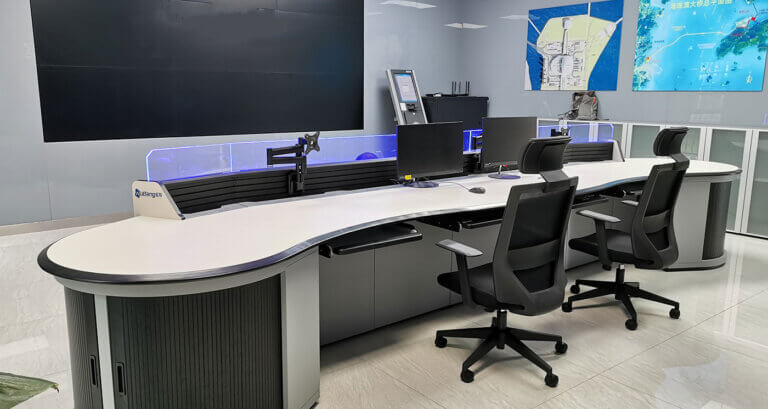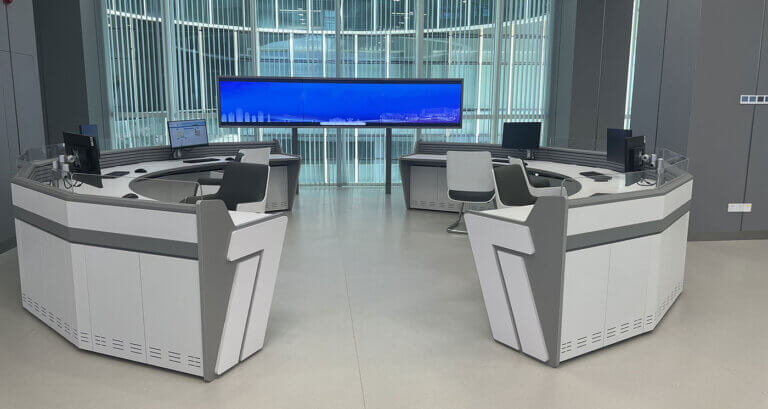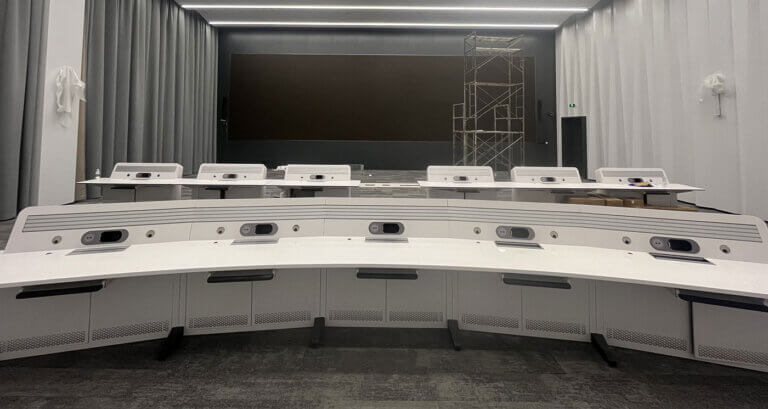
Product Categories

Hong Kong-Zhuhai-Macao Bridge Police Station

World Meteorological Center Hong Kong-Zhuhai-Macao Branch Center

Shanghai Hongqiao Airport Command Center
The control room of a nuclear power plant houses the controls, monitoring instruments, computers and alarms that operators use to monitor the plant’s performance.
Designed with ergonomics in mind, control rooms enable operators to have all the information they need in one place to:
So in essence, the control room allows operators to keep the plant operating safely by giving them the tools to be in control.
While design details may vary between plants, most nuclear control rooms have some common elements. These include:
The main control area features various control consoles with panels full of gauges, indicator lights, switches and alarms. These are arranged to promote efficient monitoring and operation of plant equipment.
Multiple computer terminals connect operators to the plant computer system. This allows them to call up data on plant conditions, view trends and analyze performance.
Video display panels and projection screens provide operators with key parameter values and plant overview diagrams. These visual cues complement traditional gauges and indicators.
A glassed-in supervisor’s office sits either in the control room itself or overlooks it from above. This vantage point enables the shift supervisor to visually monitor control room activities.
Some of the main equipment and systems accessible from the control room include:
Control boards with analog meters, computer displays and control switches allow operators to monitor the core reactor parameters and adjust controls as needed.
Separate control consoles are used to manipulate and monitor secondary plant equipment like turbines, condensers, pumps and valves.
Visual and audible alarms alert operators to off-normal conditions and out-of-spec parameters. Modern plants have integrated computer-based alarm systems.
Continuous radiation detection equipment keeps operators apprised of plant radiation levels. Airborne monitors trigger alarms on high radiation.
Smoke detectors, heat sensors and manual pull stations are tied into a central fire alarm panel in the control room.
Instrumentation and controls for the ECCS are located in the control room. Operators can manually initiate emergency core cooling during accident scenarios.
The EDG system instrumentation and controls are also housed in the control room. Operators can start the diesels when normal AC power is lost.
Nuclear plants maintain the following minimum shift staffing in the control room:
Other engineers, technicians and specialty personnel support the main control room staff as well.
The crew works using formal shift routines and peer checks to ensure oversight of plant status. Job rotation maintains operator proficiency on different plant systems.
An exact replica of the actual control room exists in a plant simulator building. Simulators like this allow operators to:
Simulators greatly enhance personnel training without putting the actual plant at risk. Many are equipped with a state-of-the-art virtual reality environment too.
The existing fleet of nuclear plants feature analog control rooms built decades ago. But new enhanced control room concepts rely more on digital technology for monitoring and control.
Procedures guide operator actions during normal and emergency conditions. Older paper procedures are being replaced by computer-based versions.
Integrated computer systems consolidate functions currently performed by discrete analog systems. These more reliable digital upgrades replace obsolete equipment.
Automation concepts aim to reduce operator burden for mundane tasks. This allows operators to focus on high-level decision making during upsets.
Control room upgrades consider human factors research to avoid new concepts that could hinder operator response. All changes aim to improve efficiency without compromising safety.
As you can see, nuclear power plant control rooms are complex facilities that enable operators to run reactors safely. Both conventional analog control rooms and emerging digital concepts emphasize human performance over technology.
After all, the operators themselves represent the front line defense for protecting public health every hour of every day. And that important work takes place right at their fingertips inside the plant control room.
What is a nuclear plant control room? The nuclear plant control room houses all the instrumentation and controls required for licensed operators to monitor the plant’s vital functions. Designed with ergonomics and workflow in mind, the control room layout enables early issue detection and coordinated emergency response during abnormal conditions.